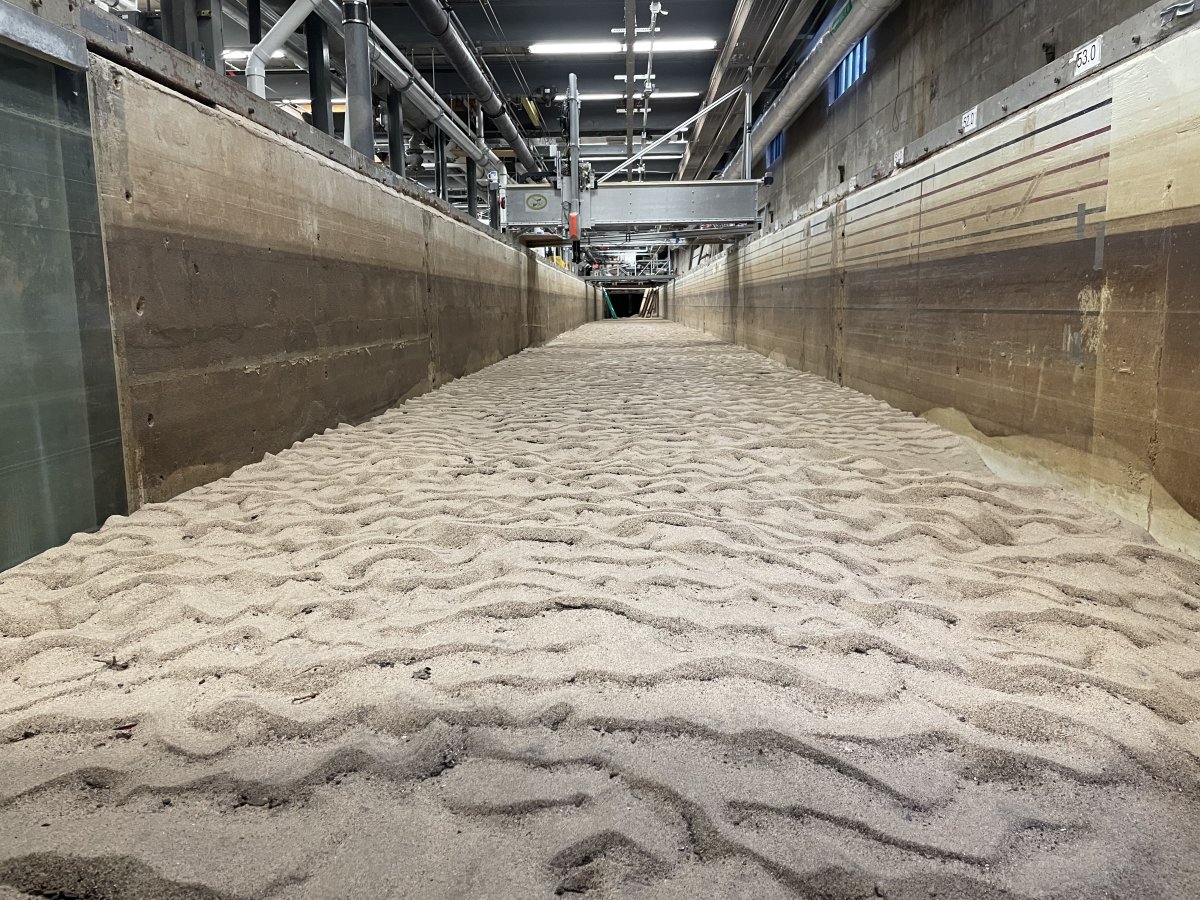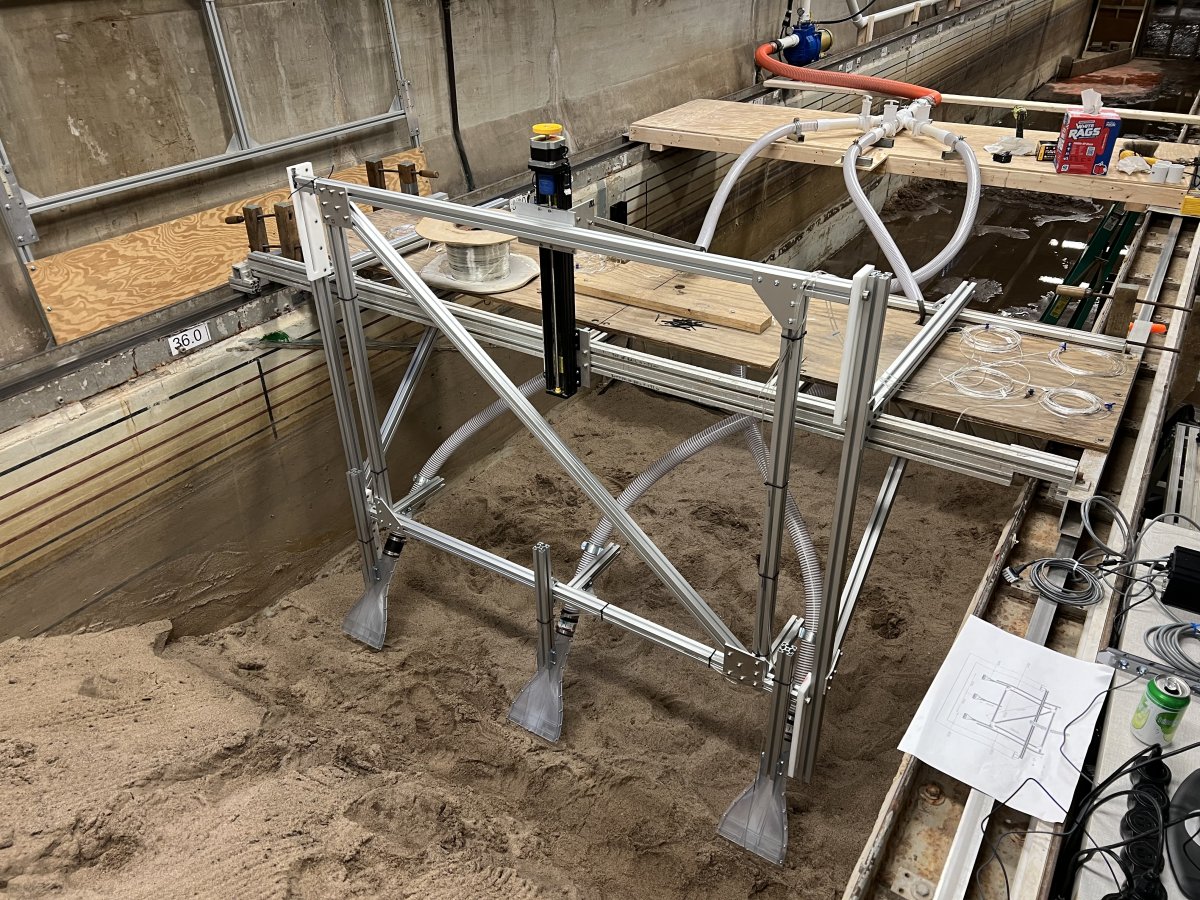Main Channel News
A new project in SAFL’s largest flume seeks to test prototypes for a “sediment transport” system that could continuously move sand past hydropower dams.

Why is sediment buildup a problem?
A healthy river system is constantly moving sediment along with it. When a river is dammed, that sediment—especially coarse sediment like sand—gets caught in the upper reservoir, reducing water storage capacity. Downstream, a river can become starved of sediment and begin to erode. Delicate ecosystems can be disrupted.
Current sediment management strategies are insufficient.
Hydropower plant operators might dredge a dam once in a while, removing banked sand from the river system all together. Or they might sluice a dam, releasing a sudden onslaught of sediment downstream, burying or killing living things. Neither of these strategies, which emerged over the decades it took for the problem (sediment) to build up in old dams, is a very good one.
Beyond ecological problems, sediment buildup can cause problems with the turbines themselves: clogging them, reducing efficiency, and requiring frequent repair.
The U.S. Department of Energy envisions new hydropower plants being built across the US, but not in the old way. Instead of bespoke dams designed for a specific point in a specific river, the DOE is considering a more lego-like, one-size-fits-many-rivers model, wherein different “modules” (such a generator module, or a fish passage module) fulfill specific pieces of a plant’s overall function and can be used in many contexts.
SAFL Solutions
Developing a “sediment transport” piece for a modular dam system has proven an enormous challenge for the engineers at Saint Anthony Falls Lab. Now, after years of design work, they are testing a hydrosuction prototype—essentially a sediment vacuum—built to continuously ingest sediment from upstream and deposit it downstream, mimicking natural flow and avoiding buildup.
To identify and fix problems with the prototype, our engineers are simulating a sand-bed river and dam in SAFL’s largest experimental flume, the “Main Channel.” There are plenty of challenges to address: how does one move sediment continuously through pipes that may be 10 miles long, without clogging those pipes? How can vacuum nozzles be designed to adjust their intake levels to accommodate natural changes in the amount of sediment moved by the river that could overwhelm the technology?

Chris Feist, an aerospace engineer by training and core member of the project, noted a theme in his work at SAFL: the study and mitigation of the downsides of green energy technologies. Because there are always downsides, and yet these technologies are essential to wean the world from fossil fuels.
At the time many of our hydropower dams were built, engineers weren’t necessarily thinking about ecological impacts in their designs—or at least, those concerns didn’t tip the scales. Abundant energy was worth the environmental cost.
Today, the equation has flipped. But to build or retrofit dams considering the passage of fish, the movement of sand, and the needs of human communities is very complicated, not to mention expensive.
Feist wonders whether society is ready to really invest in these types of green energy infrastructure—even if our future depends on it.
We’ll continue to check in with the team and keep you posted on how the sediment vacuum performs.
Questions?
Contact Jeff Marr:
marrx003@umn.edu
